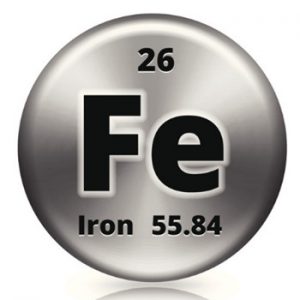 STAINLESS STEEL
STAINLESS STEEL
Austenitic steels are iron-based fcc steels with 16–25% Cr (the Cr is included such that a self-healing CrO Chromium(II) oxide forms at the surface); Mo, which enhances resistance against pitting; and Ni, which produces the austenite.
Austenitic steels have higher strength and better corrosion and oxidation resistance than Ferritic and Martensitic stainless steels. They are, however, limited by swelling resistance under radiation and have some susceptibility to stress-corrosion cracking in water-cooled nuclear systems. In fast, fusion, and light water reactor environments, void swelling occurs in austenitic steels, which leads to a loss of ductility. This is due to “quasi-embrittlement,” where there is a suppression of uniform deformation. In this case, macroscopically the alloy appears to soften although the ductility decreases dramatically due to the microscopic deformation at the region of failure.
Austenitic steels limit the desired high burn-up range due to low resistance to radiation-induced swelling. The problem they encounter is a large amount of void swelling even at moderate neutron doses, which is much higher than that of Ferritic and Martensitic stainless steels.
Duplex SS are two-phase alloys containing an equal proportion of ferritic and austenitic phases in their microstructure, providing a combination of the corrosion resistance of austenitic stainless steels with greater strength. Hence, they have a mixed microstructure of austenite and ferrite, the aim usually being to produce a 50/50 mix, although in commercial alloys the ratio may be 40/60. With carbon content lower than 0.03%, the amount of Cr and Ni content can be varied from 20% to 30% and from 5% to 8%, respectively. Minor alloying elements contained in duplex SS include molybdenum, nitrogen, tungsten, and copper.
The most commonly used stainless steel of LKALLOY supplying is AISI 316Ti, AISI 347, 2205 and 2507 steel in several forms and specifications, such as pipe, tubing, bars, and pipe flanges. These materials are widely used in the oil and gas industry, marine industrial, chemical processing and nuclear industries due to their excellent strength and pipe, tube, plate and pipe fittings in the solution treated and quenched condition.
Area of applications
Stainless Steel is used in shipbuilding, chemical, dyeing, brewing, off-shore, pharmaceutical, textile, petrochemical, plastics and paper industries.
Chemical processing| Bolts, nuts working in contact with salts, parts and components of ships and ships, medical implants, surgical implants, springs, Petrochemical engineering| Oil and gas pipeline, heat exchanger, fittings and installations.
Construction| Balustrades, frames, ornaments, welded fittings, installations, parts of machines producing rubber.
Material Corresponding
| Alloy | ASTM | JIS | DIN | EN | GB |
| 316Ti | TP 316Ti | SUS316Ti | 1.4571 | X6CrNiMoTi17-12-2 | 06Cr17Ni12Mo2Ti |
| 347 | TP 347 | SUS347 | 1.455 | X6CrNiNb18-10 | 06Cr18Ni11Nb |
| S31803 | SUS329J3L | 1.4462 | X2CrNiMoN22-5-3 | 00Cr18Ni5Mo3Si2 | |
| S32205 | 2205 | SUS 329J3L | 1.4507 | X2CrNiMoCuN25-6-3 | 00Cr23Ni5Mo3N |
| S32750 | 2507 | UR47N | 1.4410 | 00Cr25Ni7Mo4N |
Contact Us
![]() Room 2-1104, Jinqiao Int’l, Sanqiao, Fengdong New Town, Xixian New Area, Shaanxi FTZ, China
Room 2-1104, Jinqiao Int’l, Sanqiao, Fengdong New Town, Xixian New Area, Shaanxi FTZ, China
![]() Tel: +86-29-89506568
Tel: +86-29-89506568
![]() Email: [email protected]
Email: [email protected]
